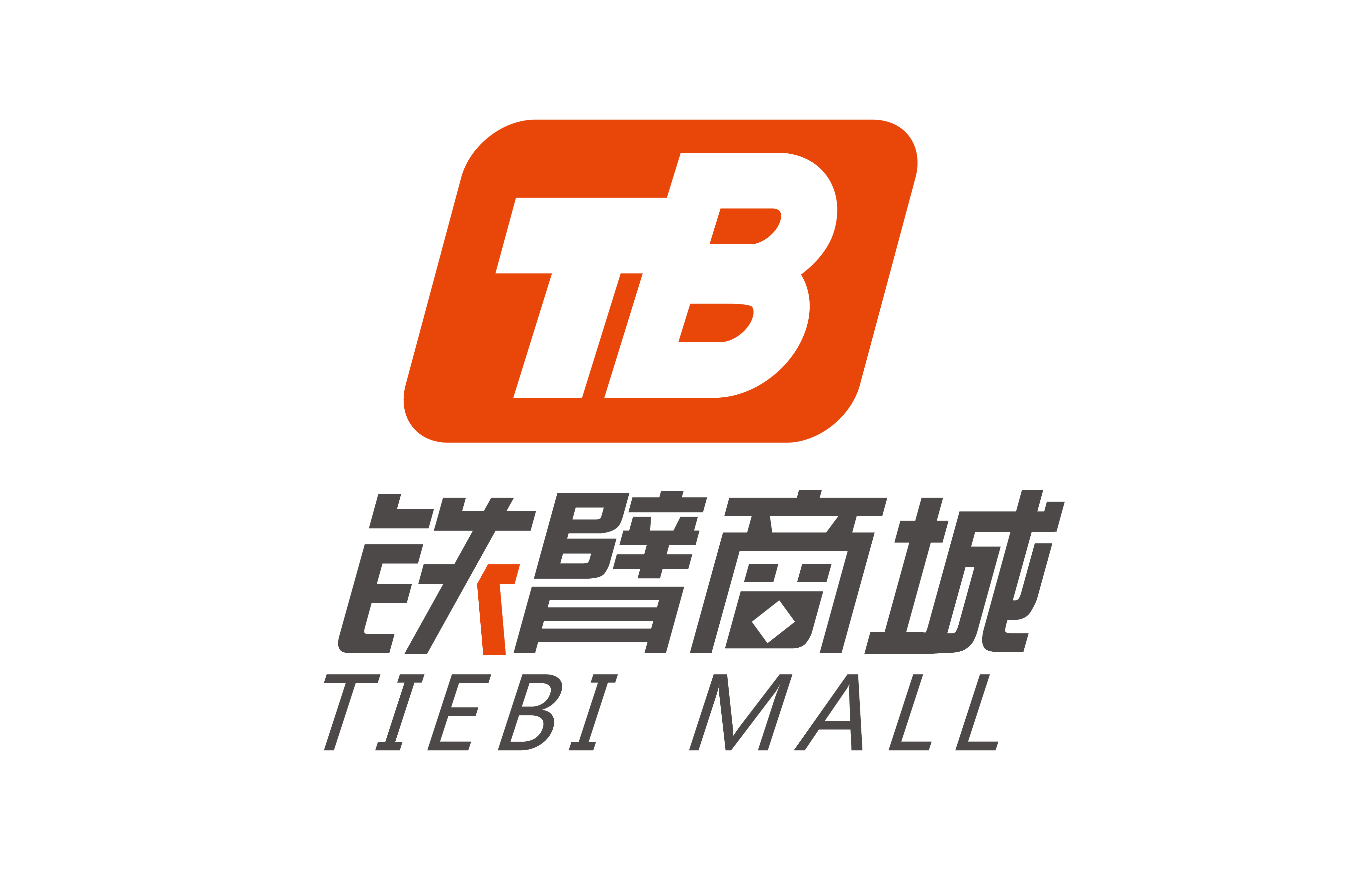2017е№ҙ11жңҲпјҢгҖҠжҫҺж№ғж–°й—»гҖӢиӢұж–ҮзүҲеҲҠзҷ»дәҶдёҖзҜҮйўҳдёәвҖңShanghai Buckles Under Mounting Demolition Debris-Stricter waste dumping rules whip up clouds of dust in city suburbвҖқпјҲдёҠжө·еҠ ејәжІ»зҗҶе»әзӯ‘еһғеңҫйқһжі•еҖҫеҖ’пјүзҡ„ж–Үз« пјҢеұұзҫҺиӮЎд»Ҫи‘ЈдәӢй•ҝжқЁе®үж°‘е…Ҳз”ҹе°ұе»әзӯ‘еһғеңҫеӨ„зҗҶзӯүй—®йўҳжҺҘеҸ—дәҶгҖҠжҫҺж№ғж–°й—»гҖӢпјҲиӢұж–ҮзүҲпјүи®°иҖ…йҮҮи®ҝпјҢ并еҸ‘иЎЁдәҶзӣёе…іи§ӮзӮ№пјҡ


жҠҘйҒ“е…Ёж–Үпјҡ
Shanghai Buckles Under Mounting Demolition Debris
Stricter waste dumping rules whip up clouds of dust in city suburb
Nov 20, 2017
SHANGHAIвҖ” Every hour, a truck laden with construction waste enters a site the size of two soccer fields in a southwestern suburb of ChinaвҖҷs most populous city.
A short distance away from the mounds of bricks, wooden boards, and concrete blocks, Zhang Baobao sells unrefrigerated slabs of pork, chicken, and beef. The 51-year-old finds herself constantly battling the dust and pollution at the construction waste sorting site. It gets everywhere: in her hair, on the laundry she hangs out to dry at her nearby apartment, and even on her meat. вҖңSometimes itвҖҷs like a sandstorm,вҖқ she told Sixth Tone.
Like in many other Chinese cities, Shanghai government departments, developers, and individuals frequently tear down old buildings that are illegal, outdated, or simply standing in the way of urban renewal. Occasionally, such demolitions make headlines, such as in the case of one famous Shanghai вҖңnail house.вҖқ
But with the skylines of ChinaвҖҷs metropolises in a constant state of flux, demolitions usually attract little attention, and the same goes for the massive amounts of waste they produce. Stricter rules for dumping construction waste in Shanghai and its neighboring provinces вҖ” combined with an uptick in demolitions of illegal structures вҖ” have highlighted just how much waste the cityвҖҷs construction sites produce: a staggering estimate of 20,000 tons of construction waste a day, about three times the weight of the Eiffel Tower. When it comes to legally disposing of this waste, however, the options are limited.
In the past, some of the cityвҖҷs construction waste was dumped illegally, often inrivers and lakes far from the city. Last year, eight ships from Shanghai were caught dumping 4,000 tons of construction material and household waste вҖ”roughly equivalent to one-third of the trash produced in New York City each dayвҖ” on the scenic shores of Taihu Lake, loCATed about an hour from Shanghai in eastern ChinaвҖҷs Jiangsu province. According to news reports, the company responsible was planning to dump a total of 4 million tons of waste within one and a half years.
With the waste disposal issue reaching a tipping point, in July, the Shanghai government announced a ban on transporting construction waste from the city to other provinces. Currently, however, Shanghai lacks sufficient infrastructure to manage the waste it produces. The municipal leadershipвҖҷs order to handle the problem by either burning or recycling construction waste has trickled all the way down to neighborhood officials, who have begun to feel the burden.
вҖңWe have tried our best, but a large portion of the construction waste still has nowhere to go,вҖқ said Shen Feng, a sanitation official in the Yueyang neighborhood of ShanghaiвҖҷs Songjiang District, home to the construction waste site that Sixth Tone visited. Songjiang produces around 1,000 tons of construction waste per day.
вҖңWe have tried our best, but a large portion of the construction waste still has nowhere to go.
- Shen Feng, neighborhood sanitation official вҖқ
During the sorting process, nearly 25 percent of construction waste is classified as combustible, meaning it can be incinerated. But due to the immense volume and crude sorting technology, not all combustible materials make it to incinerators.
Another 50 percent of the waste can be recycled, typically for use in building roads or filling hollow land. The remaining 25 percent is dust or ash вҖ” materials that have triggered complaints from the public and stumped waste management officials.
By 2020, Shanghai intends to recycle, reuse, or burn all the construction waste it produces. But the challenges become clear at the dumping site near ZhangвҖҷs butcher shop, one of few sites where such waste is being sorted. With the help of excavators, site foreman Su Jian and his co-workers sort through mountains of waste each day. They have taken to hosing down the trash with water to better control the dust. Su told Sixth Tone that they received specially designed, enclosed sorting machines to help reduce the amount of dust in the air, but that they are waiting for the machines to be connected to a source of electricity.
вҖңThe city has difficulty processing the growing volume [of construction waste] ,вҖқ said Yao Yongmei, the official who oversees sanitation regulation in Songjiang. At present, the districtвҖҷs single incineration plant has a capacity of 2,000 tons per day and is designed to handle household waste, though it is also used to burn combustible construction waste.
вҖңWe are now preparing to build new plants in the suburbs, which may help to process waste from downtown districts in the future,вҖқ Yao said, explaining that plansare underway to add three more waste processing plants in Songjiang and to increase the lone incineration plantвҖҷs daily capacity to 3,500 tons of combustible wasteвҖ” generated by both households and construction sites вҖ” by 2020. One of the new processing plants will be dediCATed to handling the districtвҖҷs recyclable construction waste.
Still, Yao noted that resolving the waste issue remains вҖңchallenging.вҖқ Environmental experts recommend recycling over landfills, but in addition to new processing plants, the city also needs to clarify the market price of waste sorting and recycling, as well as better enforce new regulations, Yao said.
YangAnming, president of Shanghai Sanme Mining Machinery Co. Ltd. вҖ” which manufactures construction waste recycling equipment вҖ” agrees that stronger enforcement of waste management regulations is necessary to improve recycling rates. вҖң The cost of breaking the law [by dumping waste illegally] is low, so not many people tend to turn the waste into products, вҖқ Yang said. The profits to be made from recycling are also extremely low due to labor costs, processing difficulty, and uncertain government subsidies, Yang added. Many recycling companies, he said, have the capacity to take on more reusable materials вҖ” such as concrete, bricks, and scrap metal вҖ” than they currently receive.
жқЁе®үж°‘пјҢдёҠжө·еұұзҫҺйҮҚеһӢзҹҝеұұжңәжў°иӮЎд»Ҫжңүйҷҗе…¬еҸёи‘ЈдәӢй•ҝпјҢдёҖ家е»әзӯ‘еһғеңҫеӨ„зҗҶи®ҫеӨҮзҡ„еҲ¶йҖ е•ҶпјҢи®ӨдёәжӣҙдёҘж јзҡ„еәҹзү©з®ЎзҗҶжқЎдҫӢжү§жі•еҜ№дәҺжҸҗй«ҳе»әзӯ‘еһғеңҫеӣһ收зҺҮеҫҲжңүеҝ…иҰҒгҖӮжқЁжҖ»жҢҮеҮәвҖңйқһжі•еҖҫеҖ’е»әзӯ‘еһғеңҫзҡ„иҝқжі•жҲҗжң¬иҫғдҪҺпјҢеҜјиҮҙе»әзӯ‘еһғеңҫеҸҳжҲҗеҶҚз”ҹдә§е“Ғзјәд№ҸеҠЁеҠӣгҖӮвҖқжқЁжҖ»иЎҘе……пјҢз”ұдәҺеҠіеҠЁеҠӣжҲҗжң¬гҖҒеӨ„зҪ®е·ҘиүәеӨҚжқӮжҖ§д»ҘеҸҠж”ҝзӯ–иЎҘиҙҙзҡ„дёҚзЎ®е®ҡжҖ§пјҢе»әзӯ‘еһғеңҫиө„жәҗеҢ–зҡ„еҲ©ж¶Ұд№ҹйқһеёёдҪҺгҖӮи®ёеӨҡе»әзӯ‘еһғеңҫеӨ„зҪ®дјҒдёҡеҸҜеӨ„зҪ®жӣҙеӨҡзҡ„еҸҜеҫӘзҺҜеҲ©з”Ёзҡ„жқҗж–ҷпјҢеҰӮеәҹејғж··еҮқеңҹгҖҒеәҹз –еқ—е’ҢеәҹйҮ‘еұһзӯүгҖӮ
вҖңThe cost of breaking the law [by dumping waste illegally] is low, so notmany people tend to turn the waste into products.
- Yang Anming, president of a construction waste recycling equipment company вҖқ
вҖңйқһжі•еҖҫеҖ’е»әзӯ‘еһғеңҫзҡ„иҝқжі•жҲҗжң¬иҫғдҪҺпјҢеҜјиҮҙе»әзӯ‘еһғеңҫеҸҳжҲҗеҶҚз”ҹдә§е“Ғзјәд№ҸеҠЁеҠӣгҖӮ
--жқЁе®үж°‘пјҢдёҠжө·еұұзҫҺйҮҚеһӢзҹҝеұұжңәжў°иӮЎд»Ҫжңүйҷҗе…¬еҸёи‘ЈдәӢй•ҝвҖқ
In addition, the popular perception of recycled products needs to shift, said Yang. вҖңConstruction wasteis commonly referred to as garbage, so people have a mental block when they hear that,вҖқ Yang explained. вҖң They wonвҖҷt accept such products even though they are harmless and meet [safety] standards. вҖқ
жӯӨеӨ–пјҢдәә们еҜ№еҶҚз”ҹдә§е“Ғзҡ„жҷ®йҒҚзңӢжі•жңүеҫ…ж”№еҸҳпјҢжқЁжҖ»е‘ҠиҜүи®°иҖ…вҖңе»әзӯ‘еәҹејғзү©йҖҡеёёиў«и®ӨдёәжҳҜеһғеңҫпјҢеӣ жӯӨдәә们еҗ¬еҲ°иҝҷдёӘеҗҚеӯ—е°ұдјҡжңүжҠөи§ҰгҖӮ他们йңҖиҰҒж—¶й—ҙжҺҘеҸ—е»әзӯ‘еһғеңҫеҶҚз”ҹдә§е“ҒпјҢеҚідҪҝе®ғ们з¬ҰеҗҲе®үе…Ёе’ҢиҙЁйҮҸж ҮеҮҶгҖӮвҖқ
The problem of mounting construction waste isnвҖҷt unique to China: The U.S.вҖҷs 1980 Superfund program put the onus of handling construction waste on the companies that produce it, and a law in Japan stipulating that construction waste should be recycled whenever possible has led to a recycling rate of 96 percent.
However, Yao said itвҖҷs difficult for China to learn from international examples because its volume of construction and demolition waste is much higher. Since 2000, China has built over 1,400 skyscrapers, more than any other country in the same period.
There may be progress on the horizon: A new regulation on construction waste management in Shanghai due to take effect in January stresses the need to reduce construction waste generation and promotes greater recycling efforts. It also stipulates responsibility for managing construction waste from the demolition of illegal buildings, and it extends the scope of construction waste management to include private interior design waste like wood, paint, and metal plates вҖ” which were excluded under previous regulations.
Yet Songjiang butcher Zhang has little hope that the dust will settle anytime soon. Her complaints to neighborhood officials, she said, have fallen on deaf ears. Soon, the house she lives in will add to the waste and pollution: More than a dozen old bungalows and two-story houses have been slated for demolition to make way for more modern buildings in her neighborhood.
Editors: Colum Murphy and Denise Hruby.
(Header image: Workers discussa plan for handling the mountain of trash at the waste sorting site after several days of rain in Songjiang District, Shanghai, Oct. 17, 2017. YuDingzhang/Sixth Tone)
е»әзӯ‘еәҹејғзү©зҡ„еӨ„зҗҶе’ҢеҲ©з”ЁжҳҜдёҖйЎ№й•ҝжңҹиү°иӢҰеӨҚжқӮзҡ„е·ҘдҪңпјҢж—ўйңҖиҰҒдј—еӨҡдјҒдёҡзҡ„з§ҜжһҒеҸӮдёҺе’ҢзӨҫдјҡеҗ„з•Ңзҡ„е№ҝжіӣе…іжіЁпјҢеҸҲйңҖиҰҒеҗ„зә§ж”ҝеәңйғЁй—Ёзҡ„е…іеҝғе’ҢеӨ§еҠӣж”ҜжҢҒпјӣж—ўиҰҒи§ЈеҶіжҠҖжңҜеұӮйқўй—®йўҳпјҢеҸҲиҰҒз»“еҗҲж”ҝзӯ–гҖҒз»ҸжөҺгҖҒеёӮеңәгҖҒжі•еҲ¶гҖҒз®ЎзҗҶзӯүеӨҡдёӘеұӮйқўиҝӣиЎҢзі»з»ҹз ”з©¶гҖӮеұұзҫҺиӮЎд»Ҫе·ІдёәеӣҪеҶ…дј—еӨҡе»әзӯ‘еәҹејғзү©иө„жәҗеҢ–иҝҗиҗҘдјҒдёҡжҸҗдҫӣдәҶе®Ңж•ҙзҡ„и§ЈеҶіж–№жЎҲе’Ңе…Ҳиҝӣзҡ„жҲҗеҘ—и®ҫеӨҮпјҢжүҝе»әдәҶдј—еӨҡзҡ„еӣҪ家е’Ңең°ж–№ж”ҝеәңе»әзӯ‘еәҹејғзү©иө„жәҗеҢ–зӨәиҢғйЎ№зӣ®гҖӮеұұзҫҺиӮЎд»Ҫд№ҹеёҢжңӣдёҺиЎҢдёҡеҗҢд»Ғз§ҜжһҒз ”з©¶пјҢдёәе»әзӯ‘еһғеңҫиө„жәҗеҢ–еӨ„зҪ®жҸҗеҮәжӣҙеӨҡжӣҙдјҳзҡ„и§ЈеҶіж–№жЎҲгҖӮ
еұұзҫҺиӮЎд»Ҫ
еұұзҫҺиӮЎд»ҪпјҲдёӯеҫ·еҗҲиө„жҺ§иӮЎдјҒдёҡпјҢж–°дёүжқҝжҢӮзүҢе…¬еҸёпјүпјҢжҳҜеӣҪеҶ…е»әзӯ‘еәҹејғзү©иө„жәҗеҢ–еёӮеңәзҡ„е…іжіЁе’ҢеҸӮдёҺиҖ…пјҢжҳҜе°Ҷз ҙзўҺзӯӣеҲҶжҠҖжңҜеә”з”ЁдәҺе»әзӯ‘еәҹејғзү©иө„жәҗеҢ–еёӮеңә并иҝӣиЎҢдәҢж¬ЎжҠҖжңҜејҖеҸ‘е’ҢеңЁиҜҘеёӮеңәе…·жңүиҫғеӨҡзҹҘиҜҶдә§жқғжҠҖжңҜзҡ„дјҳеҠҝиҖ…пјҢжҳҜе»әзӯ‘еәҹејғзү©иө„жәҗеҢ–иҝҗиҗҘеёӮеңәзҡ„дјҳеҠҝеҗҲдҪңиҖ…гҖӮ
еҲ°зӣ®еүҚпјҢеұұзҫҺиӮЎд»Ҫе·ІдёәеӣҪеҶ…дј—еӨҡе»әзӯ‘еәҹејғзү©иө„жәҗеҢ–иҝҗиҗҘдјҒдёҡжҸҗдҫӣдәҶе®Ңж•ҙзҡ„и§ЈеҶіж–№жЎҲе’Ңе…Ҳиҝӣзҡ„жҲҗеҘ—и®ҫеӨҮпјҢе»әз«ӢдәҶиүҜеҘҪзҡ„еҗҲдҪңе…ізі»пјҢжүҝе»әдәҶдј—еӨҡзҡ„еӣҪ家е’Ңең°ж–№ж”ҝеәңе»әзӯ‘еәҹејғзү©иө„жәҗеҢ–зӨәиҢғйЎ№зӣ®гҖӮ




















